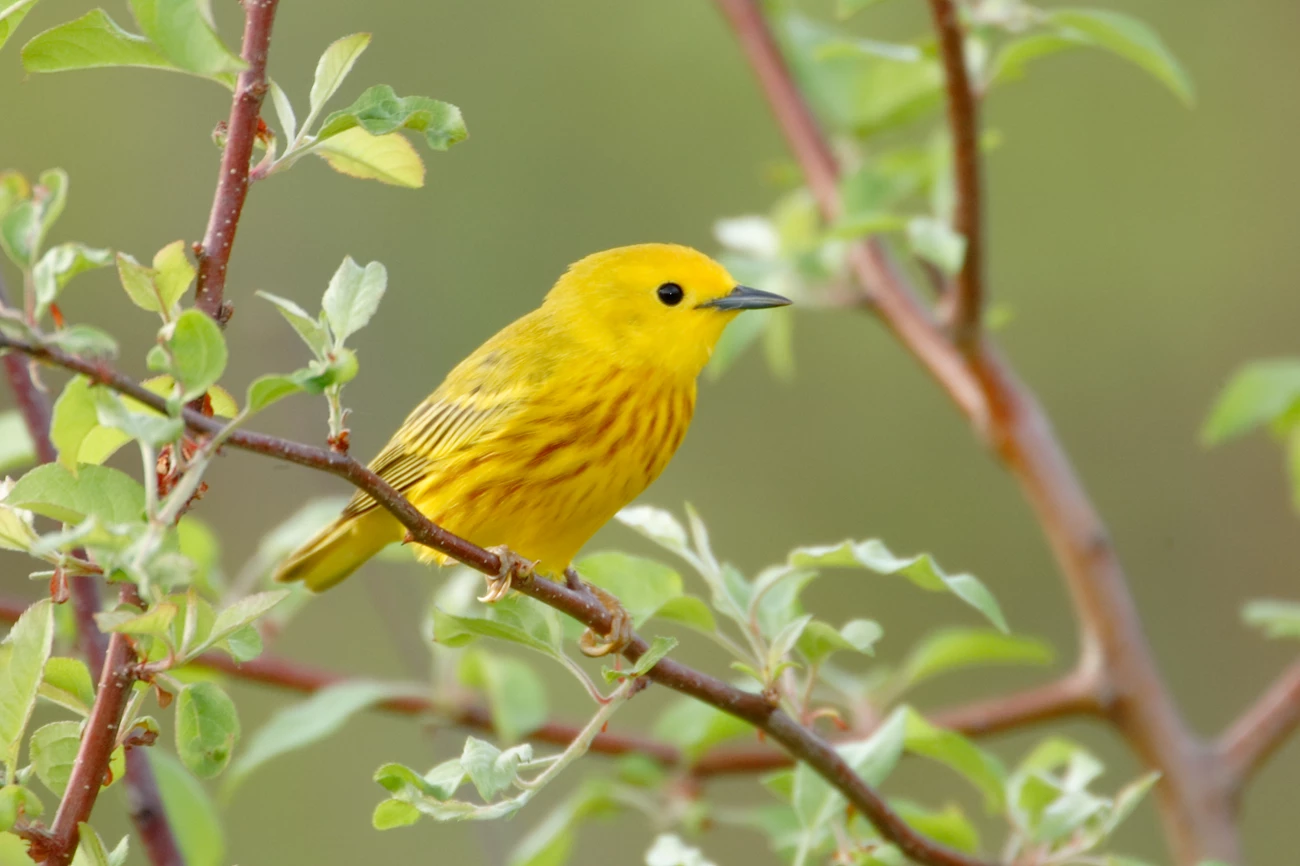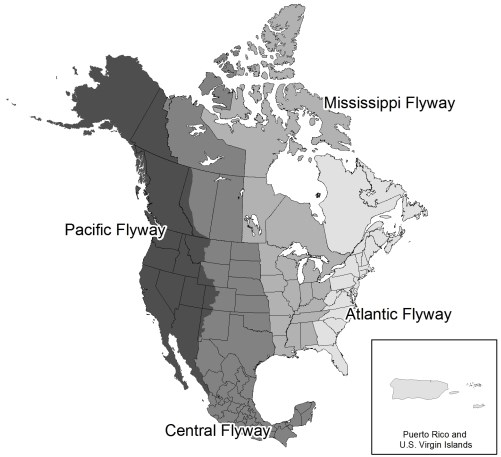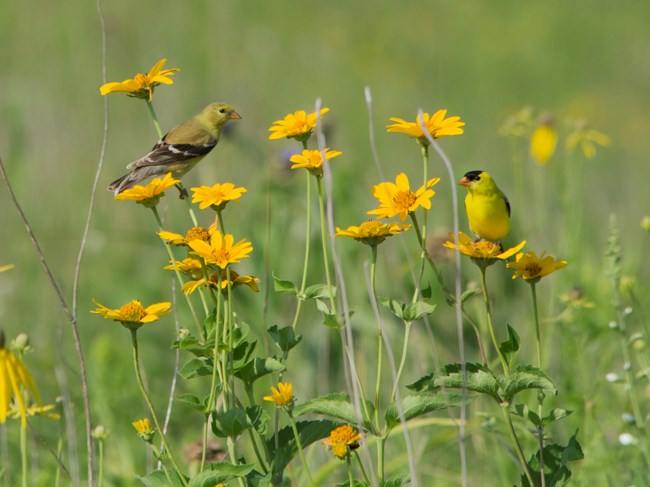Last updated: September 23, 2020
Article
Bird Migration and Acadia

NPS Photo/ Jim Schmidt

USFWS Photo
Billions of birds each year take a similar long distance trip twice a year. In the northern hemisphere’s spring, bird species from across South and Central America take flight and travel north to their breeding grounds. After they have raised their young and prepared for migration, they begin their journey back to their winter homes. This phenomenon is known as bird migration, one of the most extraordinary, yet most dangerous aspects of the natural world.
Most bird migration occurs at night. In spring, as the days begin to lengthen, birds begin to set out on their long journey a few hours after sunset. Some birds fly over 4,000 miles from places like the tropics of Ecuador to the boreal forests of Maine. Along their journey, birds face many obstacles that can prove fatal. Bad weather, including hurricanes, can be disastrous for a bird. If birds are unable to find food along their journey, they can run out of energy and become exhausted. Another risk is the possibility of flying into a skyscraper or building as birds pass through cities at night. All of these obstacles make it important for birds to have places to stop along their journey to rest, refuel, and get ready for another night of flying. One of these places is Acadia National Park.
Acadia National Park’s location along coastal New England, and its conservation of important habitats for birds, makes it a critical place for birds species to stop during their spring or fall migration. The Great Meadow, found around the Sieur de Monts Spring area, and the Bass Harbor Marsh o hosts a variety of insect species that provide great fuel for migrating songbirds. Schoodic Point and Seawall Picnic Area are some of the first places birds can land after a night of flying over open ocean. During fall migration, late August to early November, Cadillac Mountain hosts hundreds of migrating raptors, one of the few groups of birds that undertakes their long journey during the day. Hawk Watch, a citizen-science effort aimed at counting these migrating raptors, collects vital data for raptor migration research.

NPS Photo
Acadia National Park’s role in bird migration comes in many forms- from habitat and land conservation to citizen science. Acadia’s citizen science projects assist researchers in further understanding bird migration trends. The protection of habitat within Acadia National Park’s boundaries provide places for migrating birds to stop and refuel along their journey. However, these efforts can be done outside of Acadia National Park and spearheaded by people from all walks of life across the world. These efforts include planting native plants in your yard, which can help provide food for migrating birds. People from a variety of backgrounds can volunteer to assist with a wide range of citizen science projects. This is another great way to help migratory birds.
Acadia National Park plays a critical role in the natural phenomenon of bird migration. The birds themselves, who travel between continents each year, remind us of the interconnectedness of the natural world. As birds serve as ideal representative of this, it is important to emphasize and remember conservation of natural resources and the importance of assisting these birds throughout their entire route. Just like we need specific supplies to successfully go on our own trips, these birds need the correct habitats and food sources for their trips. Thankfully with awareness, everyday people can put together small efforts to assist these migrating birds along their entire migratory corridor.
